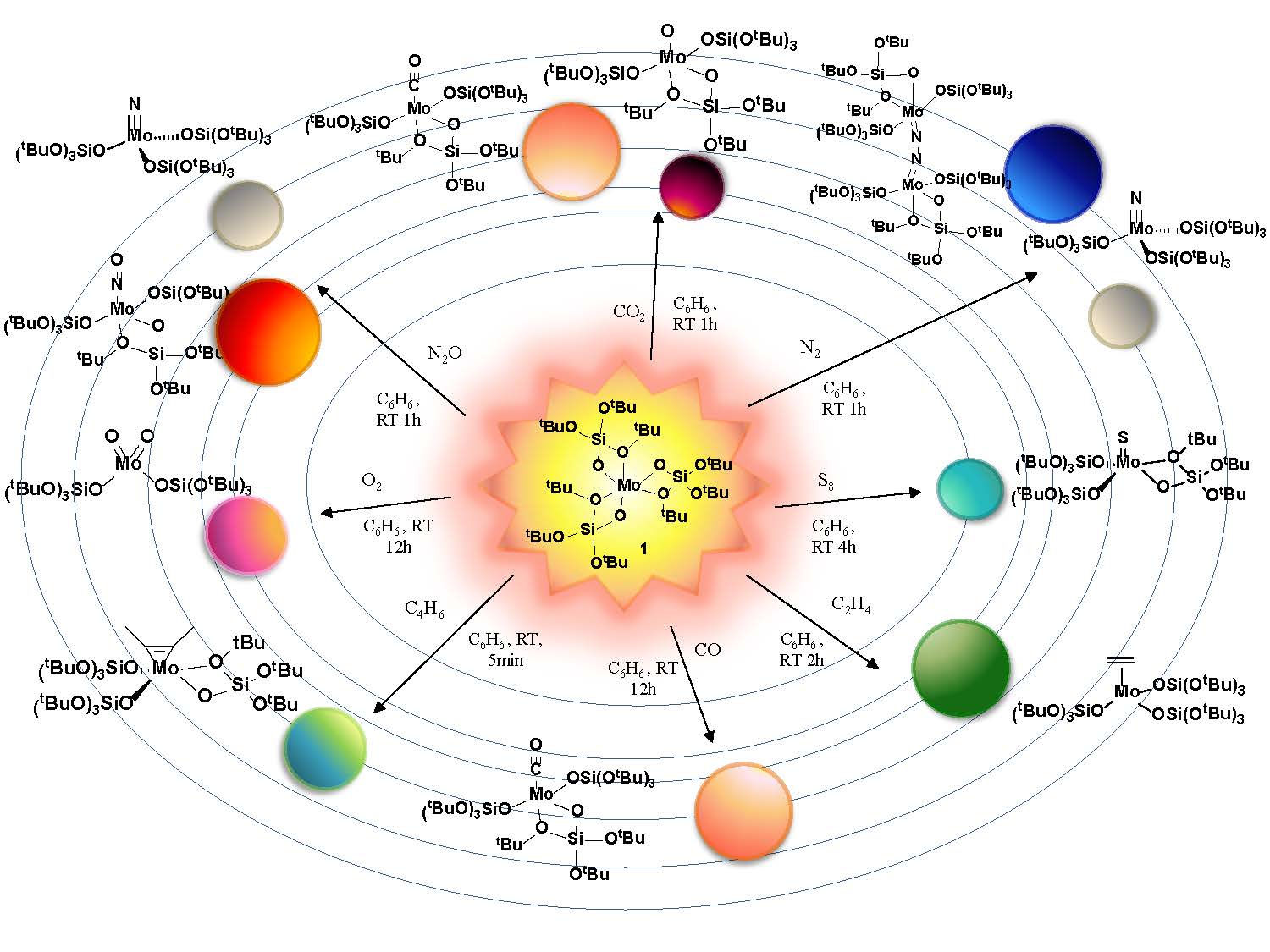Mo(OSi(tBu)3)3: Structure and Reactivity
Cr(III) surface species, prepared from Cr(III) siloxide molecular precursor, are highly active catalysts for olefin polymerization and alkane dehydrogenation.1,2 We have thus become interested in generating low coordinated isoelectronic Mo(III) surface to investigate their corresponding reactivity. To date, low coordinate Mo(III) compounds are rare; they typical require large somewhat rigid ligands like in Mo[N(R)Ar]3 (R= tBu, Ar= 3,5-C6H5Me2)2 and Mo(OSitBu)3.3 Here, we have developed the synthesis of Mo(OSi(OtBu)3)3 (1) and investigated its reactivity towards a broad range of small molecules (COx, N2O, O2, S8, ethylene and N2). The complex 1 has three siloxy ligands adopting a k2-coordination, yielding an overall distorted octahedral geometry. This complex reacts at room temperature with N2 to give the corresponding Mo(VI)-nitrido compound by dinitrogen splitting via [Mo=N=N=Mo] intermediate, which was isolated at low temperature and fully characterized. This complex also react with N2O, but does not lead to the splitting of N-O bond as expected from metal mediated decomposition of nitrous oxide4, but rather of N-N bond, leading to [Mo-h1-NO] with NO in linear fashion and Mo(VI)-N. Similarly, reaction with CO2 yields Mo(III)-CO and Mo(V)-O. The former can also be obtained from the reaction of 1 with CO. Reaction of 1 with S8 yields Mo(V)-S complex. Finally, the reaction of 1 and ethylene generates the corresponding p-complex as it does by reaction with 2-butyne.

[1] M. F. Delley, F. Nunez-Zarur, M. P. Conley, C. Copéret et al., PNAS, 2014, 111 (32), 11624-11629.
[2] M. P. Conley, M. F. Delley, C. Copéret et al. , Inorg. Chem., 2015, 54 (11), 5065–5078.
[3] C. E. Laplaza, C. C. Cummins, Angew. CHem. Int. Engl. Ed., 1995, 34, 2042; D. Kuiper, P. Wolczanski, T. Cundari, JACS, 130, 2008, 12931-12943.
[4] W.B. Tolman, Angew. Chem., Int. Ed., 2010, 49, 1018-1024.